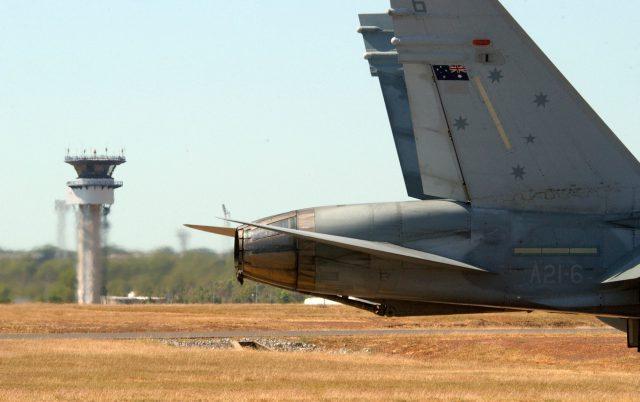OneSKY—too much blue-sky?
Posted By Marcus Hellyer on March 1, 2018 @ 06:00
Those who follow large-scale Defence acquisitions might think they know which project the following statement—taken directly from Defence’s own project reporting [1]—refers to:
The … acquisition originally intended to procure a largely commercial off-the-shelf (or military off-the-shelf system); however, the only compliant and viable solutions tendered all required significant development and integration effort to deliver the specified capability. Furthermore, there are no similar … fielded elsewhere in the world.
Cynics might say it’s a trick question that could equally apply to any number of developmental defence projects—some failures like the RAN’s Super Seasprite maritime helicopters [2], and some ultimate successes like the RAAF’s Wedgetail [3] airborne early warning aircraft.
It actually refers to OneSKY [4], the joint Airservices Australia and Department of Defence project to replace Australia’s separate military and civil air traffic management systems with a single harmonised system. A single civil-military harmonised system on the scale required in Australia hasn’t been achieved anywhere else in the world. Making it work isn’t just important to the bottom line—it’s key to the safety of the travelling public.
The statement is taken from Defence’s own data published in ANAO’s annual review of the status of the 30 biggest defence acquisition projects, the 2016–17 Major Projects Report [1]. The report is one of the few places where the public can get access to raw, unvarnished information from the coalface of Defence acquisition.
If one wants to get a sense of the risks resulting from bringing together a quasi-commercial, civil organisation with a military one—with very different requirements, funding models, cultures and expertise in major projects—to deliver a developmental system that nobody else in the world has ever successfully done on this scale, then the report is the place to look.
Despite the risks, there’s been no public explanation of the fundamental question of why going down the path of harmonisation is worth the effort and expense in the first place. No one would deny the need for efficient and, above all, safe air traffic management systems. But do the benefits of harmonisation outweigh the risks incurred by its additional complexity?
A novel feature of the OneSKY project is that many of the risks experienced in the delivery of other developmental projects—cost increases and schedule delays, among others—were already being encountered in OneSKY while contract negotiations were still underway. These contract negotiations took over three years, delaying replacement of the ageing traffic management systems that Airservices and Defence use now. The difficult work of project implementation and business change has only just begun. In a further novel development, in August 2017 Defence’s part of OneSKY (AIR 5431 Phase 3) became the only project ever to be placed on Defence’s Projects of Concern list [5] before a contract had been signed.
But on Monday this week, Airservices [6] and defence ministers Marise Payne and Christopher Pyne [7] announced that Airservices and Defence had signed contracts with Thales. Moreover the two ministers announced that OneSKY had been removed from the Projects of Concern list.
In contrast to the detail provided in the major projects report, this week’s announcement is short on key information. For example, the cost is anybody’s guess. The announcement refers to a $1.2 billion contract—about as round a number as they come. Airservices’ five-year plan [8] states that ‘OneSKY and its enabling projects account for $652 million’ of its capital spend. The approved budget for the Defence component is $730 million, though the 2016–17 Major Projects Report states that Defence wouldn’t be able to commit to a contract without a budget increase.
The announcement is silent on whether the government has increased the budget. The delay has also resulted in second-order costs—such as Defence needing to extend the life of its current, ageing system—which won’t be included in the $1.2 billion figure.
More importantly, there’s no information on how the risks that led to OneSKY being placed on the Projects of Concern list have been resolved to the point where ministers can confidently remove that additional scrutiny just five months after first being placed on the list. OneSKY is still a developmental project trying to address two very different sets of requirements to achieve a world first.
Being removed from the Projects of Concern list usually requires clearing a high bar and so takes time. The Collins-class submarine sustainment was deservedly on the list. John Coles’ review of the Collins in November 2012 [9] outlined a remediation path for the Collins’ sustainment system. But the release of his report didn’t result in the Collins being removed from the list.
It was only well after Coles’ follow-up review [10]—concluded in May 2016, which confirmed that submarine availability had gone from ‘mediocre to excellent’ and that ‘Collins now has a sustainment program arrangement that can deliver the required output’—that the two defence ministers agreed to remove Collins [11] from the Projects of Concerns list in October 2017.
Without knowing more, it looks a brave decision to remove OneSKY from the list so rapidly when it has only just entered contract and is still at the early implementation stage.
It would be disappointing if OneSKY set another precedent by being the first project to be returned to the list. Getting this complex, developmental, billion-dollar-plus project right is vital for the airlines, the military and the travelling public. Increased transparency from Airservices as it manages this key national project will help give ministers and the public the confidence they need that OneSKY will deliver the promised benefits.
Article printed from The Strategist: https://aspistrategist.ru
URL to article: /onesky-much-blue-sky/
URLs in this post:
[1] project reporting: https://www.anao.gov.au/work/major-projects-report/major-projects-report-2016-17
[2] Super Seasprite maritime helicopters: https://www.anao.gov.au/work/performance-audit/super-seasprite
[3] RAAF’s Wedgetail: https://www.airforce.gov.au/technology/aircraft/intelligence-surveillance-and-reconnaissance/e-7a-wedgetail
[4] OneSKY: http://www.airservicesaustralia.com/projects/onesky/
[5] Projects of Concern list: https://www.minister.defence.gov.au/minister/marise-payne/media-releases/minister-defence-industry-minister-defence-joint-media-release
[6] Airservices: http://newsroom.airservicesaustralia.com/releases/onesky-milestone-signals-new-age-in-australian-air-traffic-management-and-beyond
[7] defence ministers Marise Payne and Christopher Pyne: https://www.minister.defence.gov.au/minister/marise-payne/media-releases/minister-defence-minister-defence-industry-onesky-ready-take
[8] Airservices’ five-year plan: http://www.airservicesaustralia.com/2017-18-corporate-plan-five-year-corporate-financial-plan/
[9] review of the Collins in November 2012: http://www.defence.gov.au/casg/Multimedia/Coles_Report_Final_22Nov12-9-7738.pdf
[10] follow-up review: http://www.defence.gov.au/casg/multimedia/coles%20beyond%20benchmark%20report.pdf
[11] remove Collins: https://www.minister.defence.gov.au/minister/marise-payne/media-releases/sustaining-capability-superiority-collins
Click here to print.
